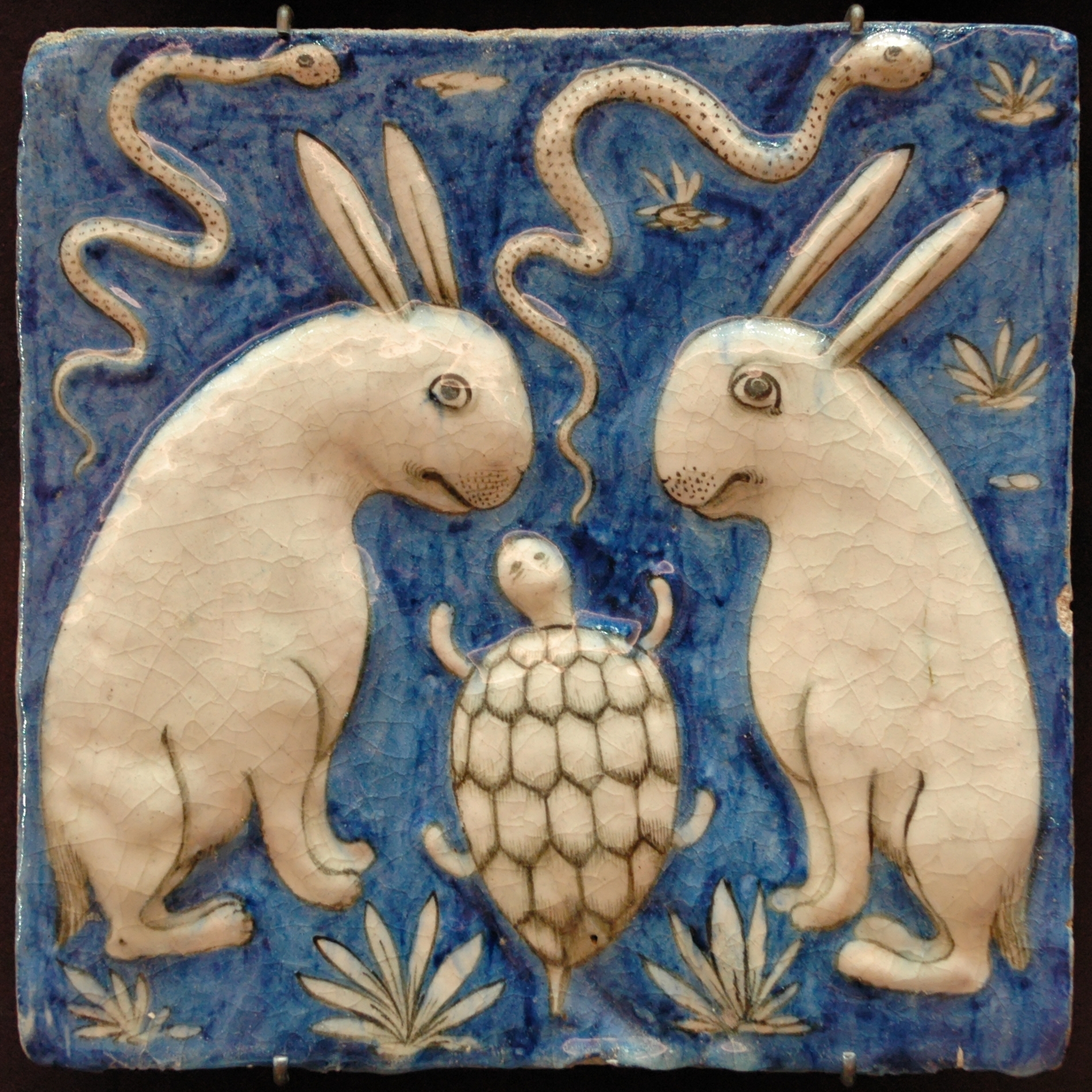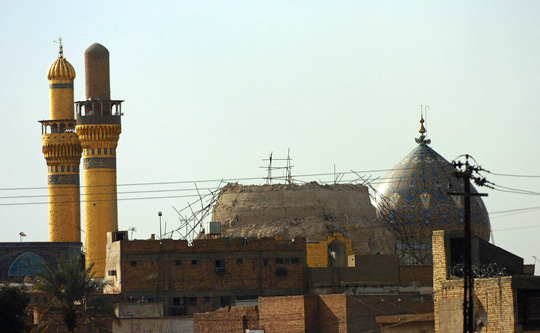|
Kilis
Kilis is a city in southernmost Turkey, near the Syria–Turkey border, border with Syria, and the administrative centre of Kilis Province and Kilis District. Its population is 112,187 (2022). On 6 February 2023 Kilis was badly affected by the twin 2023 Turkey–Syria earthquake, Turkey-Syria earthquakes. History Although there aren't any definite information related to its foundation, today's Kilis mainly developed and became urbanized during the Ottoman Empire, Ottoman period. However, traces of important cities found in the near surroundings of Kilis and the historical documents prove that important centres were always present here in every period. In the tablets belonging to the Assyrian period, the name 'Ki-li-zi' is written in cuneiform and a city named as "Ciliza Sive Urnagiganti" during the Roman Empire period is mentioned. In addition to centers such as Kirus antique city, Oylum Höyük, Ravendel, Ravanda Castle, Ilezi and Tarzime Han, many other residential areas sta ... [...More Info...] [...Related Items...] OR: [Wikipedia] [Google] [Baidu] |
Kilis District
Kilis District (also: ''Merkez'', meaning "central" in Turkish) is a Districts of Turkey, district of Kilis Province of Turkey. Its seat is the city Kilis.İlçe Belediyesi , Turkey Civil Administration Departments Inventory. Retrieved 22 December 2022. It had a total population of 125,079 in 2022. Its area is 610 km2. Composition There is one municipality in Kilis District: * Kilis There are 53 villages of Turkey, villages in Kilis District:, Turkey Civil Administration Departments Inventory. Retrieved 1 March 2023. [...More Info...] [...Related Items...] OR: [Wikipedia] [Google] [Baidu] |
ISIL Rocket Attacks On Turkey (2016)
Since early 2016, the Turkish city of Kilis and surrounding areas came under continuous rocket bombardments by the Islamic State, resulting in retaliatory strikes by the Turkish military on ISIL militants located at the ISIL-occupied areas in North Syria. Since January 2016 and until early May, more than seventy rockets fired from across the border by ISIL had hit this town, killing at least 21 people. Background Being a border town, Kilis has long had a reputation for smuggling and drug trafficking. Kilis is located 5 km (3 miles) from the Syrian border, where Syrian al-Bab district is located, under control of ISIL jihadists since 2014. Almost 100,000 Turkish citizens live in Kilis, but the population has been more than doubled by the arrival of Syrian refugees. Timeline March On 8 March, two people have been killed, including a toddler, while two others have been wounded as eight rocket projectiles hit Kilis. Two of projectiles hit a local administration office in the Ekr ... [...More Info...] [...Related Items...] OR: [Wikipedia] [Google] [Baidu] |
Kilis Province
Kilis Province () is a province in southern Turkey, on the border with Syria. Its area is 1,412 km2, and its population is 147,919 (2022). The province was created in 1995 from the southern part of Gaziantep Province. The city of Kilis is home to over 75% of the inhabitants of the province; the other towns and villages are very small. Districts The province is divided into 4 districts A district is a type of administrative division that in some countries is managed by the local government. Across the world, areas known as "districts" vary greatly in size, spanning regions or counties, several municipalities, subdivisions ..., listed below with their official estimates of population as of 2022: Elbeyli District (5,594), Kilis District (the capital district) (125,079), Musabeyli District (12,390) and Polateli District (4,856). See also * List of populated places in Kilis Province References External links *Kilis governor's official website*Kilis municipal ... [...More Info...] [...Related Items...] OR: [Wikipedia] [Google] [Baidu] |
Oylum Höyük
Oylum is a neighbourhood of the city Kilis, Kilis District, Kilis Province, Turkey. The village had a population of 517 in 2022. In late 19th century, German orientalist Martin Hartmann listed the village as a settlement of 15 houses inhabited by Turks. Archaeology Oylum is home to a höyük mound with evidence of settlement dating as far back as the Chalcolithic. Settlement continued into the Bronze and Iron Ages. Some or all of the settlement was destroyed by fire twice in the Middle Bronze Age. A third destruction event in the Late Bronze Age may be associated with Šuppiluliuma I's military campaign in Syria. The name of the site during this period of settlement has not been definitively determined. "Oylum might be the Ulisum/Ullis referred to in the third millennium BC and the Ullaza/Ukulzat/Kuilzila of the second millennium BC." Alternatively, Oylum has been suggested as the location of Hassuwa. Excavations have revealed a palace or administrative building dating to t ... [...More Info...] [...Related Items...] OR: [Wikipedia] [Google] [Baidu] |
Öncüpınar Accommodation Facility
Öncüpınar Accommodation Facility was a refugee camp for refugees fleeing the Syrian Civil War located in Öncüpınar village in Kilis, Turkey, near the Syrian border. The camp opened in 2012 and closed in 2019. As of February 2014, it hosted 14,000 people. The camp consisted of 2,053 containers, linked with brick paths. Several schools, kindergartens and playgrounds served the camp's 2,000 school children. The camp was fully operated by the Turkish Disaster and Emergency Management Presidency committee. Kilis was one of the six "container camps" opened by Turkey, which sought to offer a higher life quality than traditional tent camps. Each refugee family received a total of $43 per person monthly via a "food card" system, which could be spent in the various shops operating in the camp. The camp closed in 2019 and the remaining refugees were to be sent to another camp in Elbeyli District Elbeyli, formerly Alimantar, is a town and the administrative seat of Elbeyli Distri ... [...More Info...] [...Related Items...] OR: [Wikipedia] [Google] [Baidu] |
Syria–Turkey Border
The border between the Syrian Arab Republic and the Republic of Turkey (; ) is long, and runs from the Mediterranean Sea in the west to the tripoint with Iraq in the east. It runs across Upper Mesopotamia for some , crossing the Euphrates and reaching as far as the Tigris. Much of the border follows the Southern Turkish stretch of the Baghdad Railway, roughly along the 37th parallel between the 37th and 42nd eastern meridians. In the west, it almost surrounds the Turkish Hatay Province, partly following the course of the Orontes River and reaching the Mediterranean coast at the foot of Jebel Aqra. Description Since Turkey's 1939 appropriation of the Hatay State, the Syrian–Turkish border touches the Mediterranean coast at Ras al-Bassit, south of Mount Aqra (). Hatay province borders the Syrian Latakia and Idlib governorates. The westernmost (and southernmost) border crossing is at , some 3 km west of Yayladağı. The border reaches its southernmost point at , 2& ... [...More Info...] [...Related Items...] OR: [Wikipedia] [Google] [Baidu] |
Zakariya Al-Qazwini
Zakariyya' al-Qazwini ( , ), also known as Qazvini (), (born in Qazvin, Iran, and died 1283), was a Cosmography, cosmographer and Geography in medieval Islam, geographer. He belonged to a family of jurists originally descended from Anas bin Malik (a companion of the Islamic prophet Muhammad) which had been well established in Qazvin long before al-Qazwini was born. His most famous work is the Aja'ib al-Makhluqat, (), a seminal work in cosmography. He is also the author of the geographical dictionary (). Career Born in Qazvin to a Persianized family of Arab ancestry, al-Qazwini served as a legal expert and judge in several localities in Iran. He traveled around in Mesopotamia and the Levant, and finally entered the circle patronized by the Ilkhanid governor of Baghdad, Ata-Malik Juvayni (d. 1283 CE). It was to the latter that al-Qazwini dedicated his famous cosmography titled Aja'ib al-Makhluqat, (). This treatise, frequently illustrated, was immensely popular and is preser ... [...More Info...] [...Related Items...] OR: [Wikipedia] [Google] [Baidu] |
Islamic State
The Islamic State (IS), also known as the Islamic State of Iraq and the Levant (ISIL), the Islamic State of Iraq and Syria (ISIS) and Daesh, is a transnational Salafi jihadism, Salafi jihadist organization and unrecognized quasi-state. IS occupied significant territory in Iraq and Syria in 2013, but lost most of it in 2019. In 2014, the group proclaimed itself to be a worldwide caliphate, and claimed religious, political, and military authority over all Muslims worldwide, a claim not accepted by the vast majority of Muslims. It is List of designated terrorist groups, designated as a terrorist organisation by the United Nations and many countries around the world, including Muslim world, Muslim countries. By the end of 2015, its self-declared caliphate ruled an area with a population of about 12 million, where they enforced their extremist interpretation of Islamic law, managed an annual budget exceeding billion, and commanded more than 30,000 fighters. After a grinding co ... [...More Info...] [...Related Items...] OR: [Wikipedia] [Google] [Baidu] |
Poetry
Poetry (from the Greek language, Greek word ''poiesis'', "making") is a form of literature, literary art that uses aesthetics, aesthetic and often rhythmic qualities of language to evoke meaning (linguistics), meanings in addition to, or in place of, Denotation, literal or surface-level meanings. Any particular instance of poetry is called a poem and is written by a poet. Poets use a variety of techniques called poetic devices, such as assonance, alliteration, Phonaesthetics#Euphony and cacophony, euphony and cacophony, onomatopoeia, rhythm (via metre (poetry), metre), and sound symbolism, to produce musical or other artistic effects. They also frequently organize these effects into :Poetic forms, poetic structures, which may be strict or loose, conventional or invented by the poet. Poetic structures vary dramatically by language and cultural convention, but they often use Metre (poetry), rhythmic metre (patterns of syllable stress or syllable weight, syllable (mora) weight ... [...More Info...] [...Related Items...] OR: [Wikipedia] [Google] [Baidu] |
Border Town
A border town is a town or city close to the boundary between two countries, states, or regions. Usually the term implies that the nearness to the border is one of the things the place is most famous for. With close proximities to a different country, diverse cultural traditions can have certain influence to the place. Border towns can have highly cosmopolitan communities, a feature they share with port cities, as traveling and trading often go through the town. They can also be flashpoints for international conflicts, especially when the two countries have territorial disputes. Transcontinental List of international border towns and cities Africa Asia Europe Disputed City North America Oceania South America List of internal border towns and cities Australia Canada Colombia United Kingdom United States {, class="wikitable" , - ! Border towns!! Bordering states and territories , - , Ardmore and Ardmore, , / , - , Lanet ... [...More Info...] [...Related Items...] OR: [Wikipedia] [Google] [Baidu] |
Sunni
Sunni Islam is the largest branch of Islam and the largest religious denomination in the world. It holds that Muhammad did not appoint any successor and that his closest companion Abu Bakr () rightfully succeeded him as the caliph of the Muslim community, being appointed at the meeting of Saqifa. This contrasts with the Shia view, which holds that Muhammad appointed Ali ibn Abi Talib () as his successor. Nevertheless, Sunnis revere Ali, along with Abu Bakr, Umar () and Uthman () as ' rightly-guided caliphs'. The term means those who observe the , the practices of Muhammad. The Quran, together with hadith (especially the Six Books) and (scholarly consensus), form the basis of all traditional jurisprudence within Sunni Islam. Sharia legal rulings are derived from these basic sources, in conjunction with consideration of public welfare and juristic discretion, using the principles of jurisprudence developed by the four legal schools: Hanafi, Hanbali, Maliki ... [...More Info...] [...Related Items...] OR: [Wikipedia] [Google] [Baidu] |






